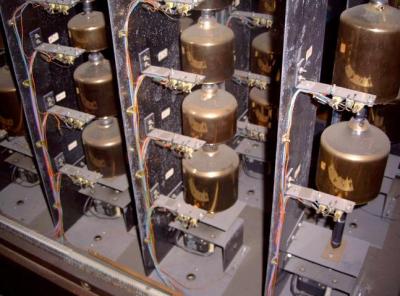The Triforium is a public art installation in Los Angeles, weighing 60 tons and standing six stories tall. Built in 1975, it was designed to combine light and sound, all under the control of computer hardware of the era.
Sadly, it was plagued with technical problems from the start, and over the years, became an object of ridicule. However, this “polyphonoptic” masterpiece will live once again, thanks to the dedicated effort of The Triforium Project. The Triforium Project are hosting a series of free public performances on Friday nights in October and November, so if you’re in the area, be sure to check it out. The series starts tonight, so get on it!
The team were able to recover the original software that ran the sculpture’s effects — stored on 8-bit paper tape, which was not uncommon for the era. These were manually transcoded, and an emulated version of the original program has been created. In the interest of not causing further damage to the sculpture, the original lights are being left untouched. Instead, an LED system will be fitted to the sculpture to enable it to be relit.

A reflection pool at the base of the sculpture is long gone, as is the original audio source. When first built it housed a carillon — a musical instrument that uses a bell for each note in the scale. In the case of the Triforium, the carillon was made of 79 quartz bells played either manually or by the computer and amplified over a speaker system.
In 2006 that carillon was removed (replace with a digital audio source) but the gods of dumpster diving were smiling that day. It was snapped up by someone who recognized the uniqueness of the instrument and shared their story as a brief webpage. We hope that some day this will also be restored to working condition and played along with the Triforium in an exhibition. The sound of a carillon is amazing to hear in person, and we suspect the timbre of quartz bells to add an indescribable layer to the experience.
For those who can’t make it to an upcoming public performance, you can at least get a feel for the scupture through Google Street View. We do love a good public art piece here at Hackaday — whether it’s a giant head, a set of wings, or doodles in the sand.
[Thanks to JohnU for the tip!]











